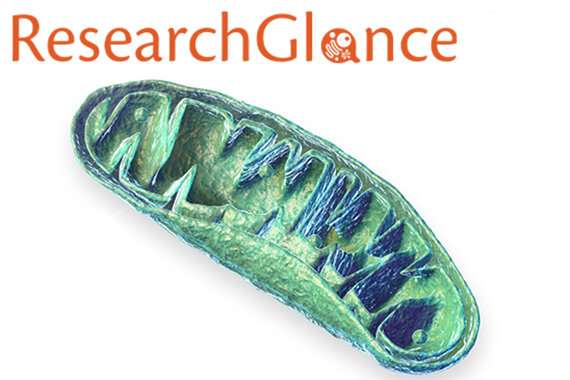Drug-resistant cancer cells create own Achilles heel

The cells of most patients' cancers are resistant to a class of drugs, called proteasome inhibitors, that should kill them. When studied in the lab, these drugs are highly effective, yet hundreds of clinical trials testing proteasome inhibitors have failed. Now scientists may have solved the mystery of these cells' surprising hardiness. The key: Resistant cancer cells have shifted how and where they generate their energy. Using this new insight, researchers have identified a drug that resensitizes cancer cells to proteasome inhibitors and pinpointed a gene that is crucial for that susceptibility.
As cancer cells develop, they accrue multiple genetic alterations that allow the cells to quickly reproduce, spread and survive in distant parts of the body, and recruit surrounding cells and tissues to support the growing tumor. To perform these functions, cancer cells must produce high volumes of the proteins that support these processes. The increased protein production and numerous mutated proteins of cancer cells make them particularly dependent on the proteasome, which is the cell's protein degradation machine. These huge protein complexes act as recycling machines, gobbling up unwanted proteins and dicing them into their amino acid building blocks, which can be reused for the production of other proteins.
Previously, researchers exploited cancer cells' increased dependency on their proteasomes to develop anti-cancer therapies that inhibit the proteasomes' function. Several distinct proteasome inhibitors have been developed, and when used in the lab, these proteasome inhibitor drugs are indeed highly effective at eradicating tumor cells. However, when administered to animal models or patients with cancer, such as multiple myeloma, proteasome inhibitors have limited efficacy and even initially vulnerable cancer cells quickly develop resistance to them. How do cancer cells so adroitly sidestep drugs that should kill them?
Exploring the gene expression of thousands of tumors and hundreds of cancer cell lines, Peter Tsvetkov, a former postdoc in the lab of late Whitehead Institute Member Susan Lindquist, has determined that the answer may lie with how and where the cells produce their energy. According to his analysis of the active genes and metabolism products generated in proteasome inhibitor-resistant cancer cells and tumors, Tsvetkov, who is currently a postdoc in the lab of Broad Institute Founding Core Member, director of the Cancer Program, and oncologist at the Dana-Farber Cancer Institute Todd Golub, concluded that such cells have shifted how they produce energy—away from breaking down the sugar glucose toward a dependency on processes within the mitochondria, the "powerhouse" part in the cell. In fact, when Tsvetkov pushed cancer cells' metabolism to depend on the mitochondria, that change alone was sufficient to make cancer cells immune to proteasome inhibitors. Tsvetkov's findings are described online this week in the journal Nature Chemical Biology.
In order to understand how a metabolic shift could link to proteasome inhibitor resistance, Tsvetkov screened proteasome inhibitor-resistant breast cancer cells with thousands of small molecules to identify the ones that hamper the cells' growth or even kill the cells. One stood out in the screen: elesclomol, a small molecule that that researchers had previously evaluated as an anti-cancer agent in phase 3 clinical trials without knowing with what the drug interacts in cancer cells. To identify how elesclomol preferentially targets the proteasome inhibitor resistant cells, Tsvetkov did genome-wide CRISPR-Cas9 screens to find out which genes elesclomol requires to incapacitate resistant cancer cells. Only the gene FDX1, which encodes an enzyme in the mitochondria, came to the fore.
In collaboration with John Markley from the Department of Biochemistry at the University of Wisconsin-Madison, Tsvetkov used biochemical and biophysical systems to demonstrate that elesclomol directly binds to the mitochondrial enzyme FDX1 and impedes its natural function. In the presence of copper, elesclomol can also be altered by the FDX1 enzyme, which increases the drug's anti-cancer toxicity. These findings led the researchers to determine that as cancer cells become overly reliant on their mitochondrial metabolism, they ramp up the FDX1 protein's activity. Also, when the FDX1 protein interacts with copper-bound elesclomol, the protein enhances the drug's copper-dependent toxicity. Thus, copper appears to play an essential role—when Tsvetkov removed copper, elesclomol was no longer effective.
Having established that a metabolic shift and resistance to proteasome inhibitors are linked, Tsvetkov is now interested in understanding how a change in metabolism allows cancer cells to adapt to other anti-cancer therapies and how copper-binding molecules such as elesclomol can be developed as effective anticancer agents.
More information: Peter Tsvetkov et al. Mitochondrial metabolism promotes adaptation to proteotoxic stress, Nature Chemical Biology (2019). DOI: 10.1038/s41589-019-0291-9




















